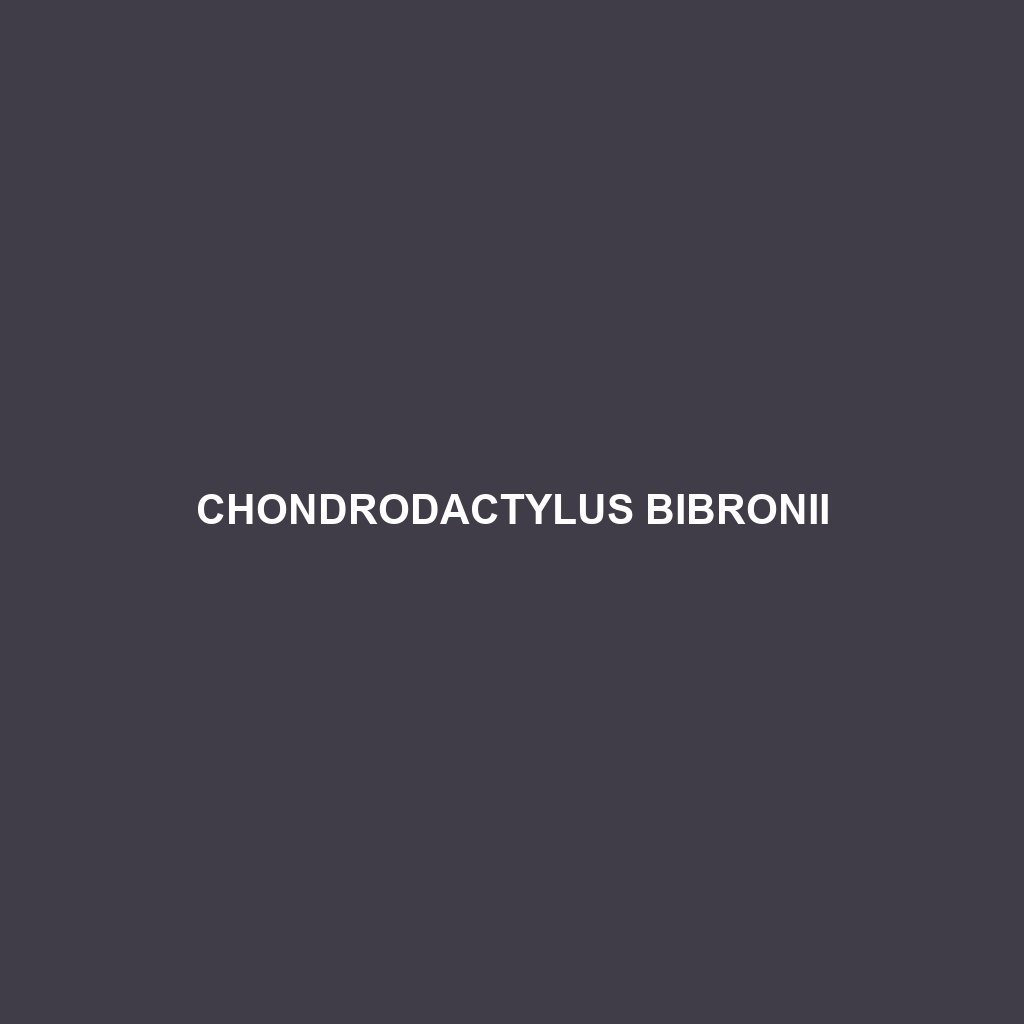Species Description: Chondrodactylus bibronii
Common Name: Chondrodactylus bibronii
Scientific Name: Chondrodactylus bibronii
Habitat: Chondrodactylus bibronii, commonly known as Bibron’s Gekko, is primarily found in the dry regions of southern Africa. This species thrives in habitats such as savannas, grasslands, and rocky terrains, particularly in countries like Namibia and South Africa. These geckos prefer areas with sandy or loose soil, which facilitate their burrowing behavior, making them well-adapted to their environment.
Physical Characteristics: Bibron’s Gekko typically measures between 10 to 12 cm in length. They have a robust body with a flattened snout and a long tail that may regenerate if lost. The coloration varies from tan to light brown with darker spots or stripes providing excellent camouflage against the sandy substrates. Their skin is covered in small tubercles, giving them a distinct textured appearance, and they possess large, round eyes, adapted for nocturnal activity.
Behavior: Chondrodactylus bibronii exhibits primarily nocturnal behavior, meaning they are most active during the night. They are known for their agile movement and adept climbing abilities, often found resting on branches or rocks during the day. Their behavior includes burrowing into the sand to escape predators and to maintain hydration in their arid habitat. Socially, they can be solitary but may be seen in small groups during the breeding season to increase mating opportunities.
Diet: The diet of Chondrodactylus bibronii consists mainly of insects and other small invertebrates. They are opportunistic feeders, often preying on crickets, beetles, and various other arthropods. Their feeding habits play a crucial role in controlling insect populations in their ecosystems, making them valuable for pest management.
Reproduction: The reproductive habits of Bibron’s Gekko typically involve seasonal breeding, with females laying eggs during the warmer months. Each clutch can contain up to two eggs, which are deposited in sandy burrows to provide a safe environment for development. The hatchlings emerge after a period of incubation, displaying a fully formed independent lifestyle right from birth.
Conservation Status: Currently, Chondrodactylus bibronii is not regarded as endangered or threatened according to the IUCN Red List. However, loss of habitat due to agriculture and urbanization poses potential risks to their populations, warranting ongoing monitoring to ensure their sustainability.
Interesting Facts: This species is particularly notable for its ability to adapt its coloration to better blend in with its environment. Additionally, Bibron’s Gekko can shed its tail when threatened, a common defense mechanism among many reptiles, enabling it to escape from predators while the tail distracts them.
Role in Ecosystem: Chondrodactylus bibronii plays a vital role in its ecosystem as both a predator and prey. By feeding on insects, they help maintain the balance of populations within their habitat. Additionally, they serve as a food source for larger predators, including birds and small mammals, illustrating their importance in the food web of southern African ecosystems.
